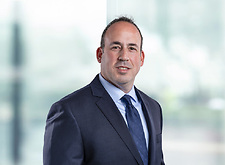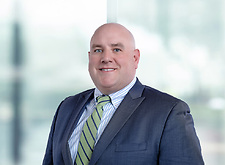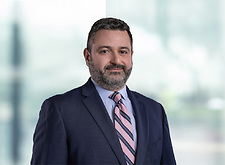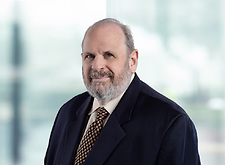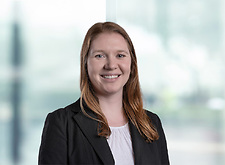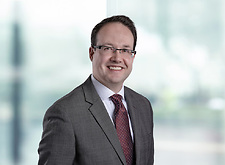Not Just Section 94-c: New York’s Budget Creates Major Renewable Energy Initiatives
New York State’s fiscal year 2021 State Budget included the Accelerated Renewable Energy Growth and Community Benefit Act (the “Act”), the primary focus of which has been the new Section 94-c of the Executive Law, which overhauls the state’s large-scale renewable siting process. But renewable energy, transmission and other market participants should be aware that Section 94-c is only one of multiple significant components of the Act.[1]
The Act also establishes a Clean Energy Resources Development and Incentive Program (the “Program”), providing the New York State Energy Research and Development Authority (“NYSERDA”) newfound authority to “foster and encourage the orderly and expedient siting and development of renewable energy facilities, particularly at sites which are difficult to develop,” and get such sites “build ready” for transfer to developers. The Act further tasks the Department of Public Service (“DPS”) with conducting a major, system-wide grid study, which will feed into utility capital plans and an investment program for system upgrades – both important components of the state’s planning to achieve the 2019 Climate Leadership and Community Protection Act’s (“CLCPA”) goals. And the Act directs the Public Service Commission (“PSC”) to initiate two new proceedings: one to provide Host Community Benefits, and another to expedite the siting of major transmission facilities under Article VII of the Public Service Law. Each of these components will engender significant activity at the PSC in the coming months and years, and will be important factors in New York’s renewable energy landscape moving forward.
I. NYSERDA to Find and Transfer Build-Ready Sites
Under the Program, NYSERDA will identify, obtain permits and interests, and transfer build-ready sites for renewable energy projects at locations that are “difficult to develop.”[2] NYSERDA will give preference to previously developed sites, including brownfields, landfills, former commercial or industrial sites, dormant electric generating sites, and otherwise underutilized sites. In the identification of suitable development sites, NYSERDA may assess the natural conditions at the site, current land uses, or the availability of transmission facilities, among other factors consistent with the goals of the CLCPA.[3]
The Act directs NYSERDA to “undertake all work and secure such permits as [NYSERDA] deems necessary or convenient to facilitate the process of establishing build-ready sites and for the transfer of the build-ready sites to developers selected pursuant to a publicly noticed, competitive bidding process authorized by law.”[4] Successful proposers will receive the rights to the site through contracts with NYSERDA, which may require the developer to provide host community benefits previously negotiated by NYSERDA and the municipality.
To assist in the identification of build-ready sites, NYSERDA will develop an incentive program to provide benefits to property owners and communities that host renewable energy facilities.
The Act further amends NYSERDA’s enabling statute to give it the authority to take the actions it deems necessary to promote this new, streamlined renewable energy siting process. The Act directs NYSERDA to file a petition with the PSC to seek ratepayer funding for the build-ready site program; state budget funds are not appropriated for this program. Although the Act does not designate a date by which NYSERDA must file a petition, it does require that the funding request seek approvals that will allow the activities of the Clean Energy Development and Incentive Program to proceed promptly.
II. State Power Grid Study
The DPS is directed to undertake a statewide power grid study. The DPS, in consultation with NYSERDA, the New York Power Authority (“NYPA”), the Long Island Power Authority (“LIPA”), the New York Independent System Operator (“NYISO”) and utilities, will identify the necessary distribution upgrades, local transmission upgrades, and bulk transmission investments necessary to facilitate the expedited renewable energy siting process. The study will look at opportunities for upgrades in each utility territory and on the bulk transmission system, considering factors such as system reliability, safety, cost-effectiveness, and avoiding constraints.
The DPS is required to issue its initial findings and recommendations by December 29, 2020. These recommendations will be informed by input from owners and developers of competitive transmission projects, the NYISO, transmission technology and smart grid solution providers, and existing grid studies. Within 60 days of the initial findings, the Act requires the PSC to commence two proceedings. The first proceeding will develop capital plans for each utility for which the initial study identified necessary upgrades. The second proceeding will establish an investment program for upgrades to the bulk transmission system. The PSC will establish a prioritized schedule for implementing the state bulk transmission investment plan and identify projects needed to most expeditiously meet the CLCPA goals. These projects must be selected through the NYISO’s transmission planning process within eight months of notice commencing the planning process cycle; however, if the PSC identifies a project that must proceed prior to the eight month period, it may do so through NYPA’s competitive procurement process. The Act also directs LIPA to establish a similar proceeding and program in its service territory.
The NYISO’s public policy transmission planning process is a two-year process performed in parallel with a reliability planning process and an economic planning process. The NYISO initiates Phase One of the process by issuing a solicitation for proposed solutions to transmission needs based on public policy requirements. The NYISO submits these proposals to the PSC and LIPA. If the PSC determines that there is a need for transmission, the NYISO will solicit projects from developers to satisfy those needs. In Phase Two, the NYISO evaluates the proposals and recommends a solution to stakeholders, who have advisory votes at the Business Issues Committee. The Management Committee will then also take an advisory vote, after which the NYISO Board may select a transmission solution.
This means that the typical, two-year transmission planning process for selecting solutions to transmission needs could be significantly shortened. Developers will have the opportunity to propose transmission, generation, energy efficiency, and/or demand response solutions to the needs identified by the NYISO and PSC within the scope of the forthcoming solicitation.
III. Host Community Benefit Program
In addition to the community benefits the Act requires as part of the NYSERDA’s “build program,” the Act also requires that by June 2, 2020, the PSC initiate a proceeding to establish a program to provide discounts, bill credits, or other benefit for utility customers in a host community where projects competitively selected by NYSERDA under the build-ready program will be sited. The benefits would be funded by owners of the renewable energy projects. The proceeding will determine the appropriate amount of these benefits based on the output of the facility, the average number of customers within the community, the impact on environmental justice communities, and other factors deemed appropriate by the PSC.
While the Act was opposed by many upstate local governments, the Host Community Benefit Program provides an opportunity for municipalities, some of which may initially oppose project development, to derive economic and environmental benefits from projects that will be sited in their community through the build-ready program.
IV. Article VII Updates
In addition to the expedited permitting process for renewable energy facilities, the Act amends Article VII of the Public Service Law to create an expedited permitting process for major electric transmission facilities. The PSC is required to issue rules for the application and review process, but the Act mandates that it must issue final decisions on all complete applications within one year.[5] The current Article VII process does not have a mandated completion date, and as such, projects have experienced significant delays. Under the Act, this one-year deadline may be extended for no more than six months to consider issues necessary to develop the record, to allow the applicant to obtain necessary consents or approvals, or other reasons that are in the public interest.[6] Alternately, these deadlines may be extended if the applicant waives them or if the application is noticed for settlement.[7] Applicants do not have the ability to waive deadlines under the current Article VII process. If any substantive and significant amendments are made to the application, the PSC will hold a public hearing. The PSC must issue a final decision on the application within six months of the hearing, unless waived.[8] This is another statutorily required end-date that does not exist in the current process.
The PSC will also issue rules for the expedited processing of applications for major transmission facilities that are proposed to be constructed in existing rights of way, that the Department of Environmental Conservation determines would not have a significant adverse environmental impact at the site, or would require expanding an existing right of way only to comply with law, regulation, or industry standards.[9] These applications must be deemed final by the Commission within 9 months of a compliant application, unless noticed for settlement by the applicant.[10]
V. What’s Next?
NYSERDA will file a petition seeking funding for the build-ready site program. The Act directs that NYSERDA seek approvals that will permit the Program to proceed promptly. The petition will be open for public comment from stakeholders. The PSC will also initiate a proceeding to develop the Host Community Benefit program by the beginning of June. Although the initial findings of the statewide system grid study are not due for another nine months, the DPS will be engaging relevant stakeholders in the near-term to kick off the grid assessment. We will be tracking these proceedings as they develop, so stay tuned for more details.
To learn more about the Accelerated Renewable Energy Growth and Community Benefit Act and how it may affect your business, please contact Noah Shaw (Saratoga Springs: 518.736.2924) or Dan Spitzer (Buffalo: 716.848.1420) in Hodgson Russ’s Renewable Energy Practice.
_________________________________
[1] A broad coalition of environmental, clean energy industry, labor and real estate groups, including the Alliance for Clean Energy – New York (“ACE-NY”) and the New York League of Conservation Voters, supported the Act and applauded Governor Cuomo’s “efforts to reform renewable energy siting and transmission planning [to] support a clean energy economic stimulus and job creation for New Yorkers” in the midst of the COVID-19 crisis. According to Urban Green Council, “[these] reforms will help overcome perhaps the single largest barrier to a carbon-free NYC – the transmission of renewable power,” and Environmental Advocates of New York said, “The practical reforms to the renewable energy and transmission siting process contained in this budget will break the backlog of wind and solar projects, injecting hundreds of millions into the economy and generating much needed revenues for local governments.”
[2] N.Y. Pub. Auth. Law § 1902 (2020).
[3] Id. at §§ 1902(1)(a), (b).
[4] Id. at § 1902(4).
[5] N.Y. Pub. Serv. Law § 123(3)(a).
[6] Id.
[7] Id.
[8] Id.
[9] Id. at § 123(b).
[10] Id. at § 123(c)(i).
Featured
- Partner
- Partner
- Partner
- Partner
- Partner
- Partner
- Partner
- Partner
- Senior Associate
- Partner
- Partner
- Co-Chair of the Firm, Partner
- Partner


